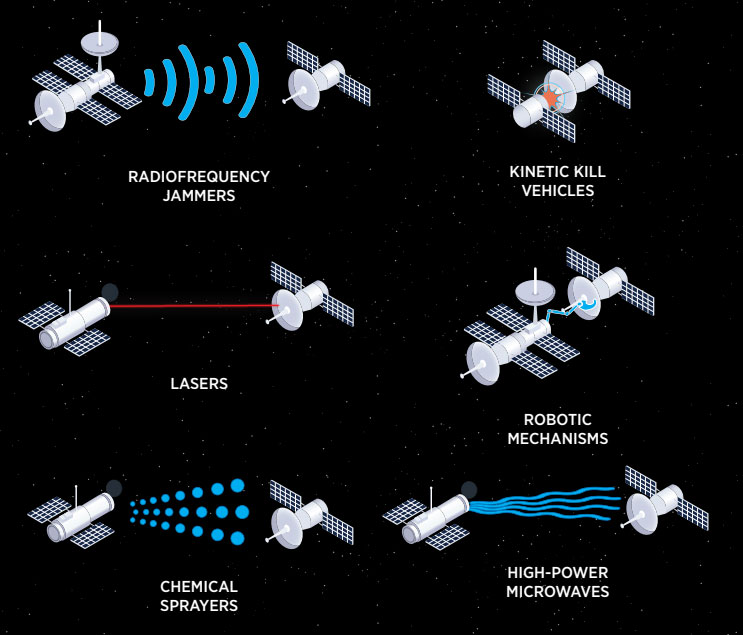
NATIONAL HARBOR, Md. — The Defense Intelligence Agency was one of the early adopters of commercial space domain awareness (SDA) data and it continues to need imagery and other sensory data outside traditional RF and optical collection.
“A lot of the focus thus far has really been on imaging from space,” Dr. John Huth, head of the Office of Space and Counterspace at DIA told Constellations on the sidelines of the 2022 Intelligence & National Security Summit. “We’re interested across the electromagnetic spectrum.”
DIA is looking for commercial partners to support Measurement and Signature Intelligence (MASINT) collection in the space domain. Huth specifically cited agency interest in gravimetric detection, which can identify chemical compounds and determine what an object is made of, as well as nuclear detection for gamma rays and other radioactive material. Those signatures can provide information on the uses and capabilities of an object in space that go beyond the information provided by RF sensing and optical and electro-optical collection.
“We’re interested in looking up or across and being able to characterize objects in space,” Huth continued. “Because that’s the real intelligence.”
During a panel discussion on commercial space, Huth underscored the benefits of the intelligence community’s partnerships with private companies. He noted that DIA would continue to be a consumer of commercial imagery and sensing capabilities as they evolve.
Outside of the intelligence community, the government has partnered with commercial entities for more traditional SDA data, for missions such as tracking space debris and space traffic management. While other SDA programs are primarily concerned with visualizing objects and predicting trajectories, DIA analysis delves deeper into the behavior, composition and actual performance of objects on orbit over time.
Huth confirmed that the Office of Space and Counterspace regularly encounters objects or activities in space that are unexpected. “In general terms, I could say we always see things that surprise us,” he told Constellations. “That’s the whole reason for looking.”
The purpose of having and building out the agency’s surveillance and reconnaissance capabilities is to “dig a little deeper,” to determine if those objects represent a threat or are benign.
 (DIA)
(DIA)
For example, an object that looks like space debris may emit a signal or other signature. A dead satellite may suddenly blink to life. Determining whether an object in orbit really is what it appears to be takes persistent surveillance aided by commercial capabilities, Huth noted.
Combining commercial and government data with advanced analytics, DIA is working to maintain an edge over strategic competitors, like Russia and China, that have been advancing programs to disrupt, destroy and deny adversaries’ access to space.
In its 2022 “Challenges to Security in Space” report, the DIA documented an increase in potential threats from Russia and China. Both countries’ combined space fleet grew 70% since 2019, with a sharp increase in Chinese ISR satellites. Moreover, Russia and China continue developing counterspace capabilities, including anti-satellite weapons, like jammers, lasers and direct-ascent ASAT missiles. The U.S. and several of its allies have committed not to use ASAT missiles in a way that destroys its target and creates space debris.
The DIA is also monitoring orbital threats, such as space-based kinetic weapons and directed energy weapons. The agency further warned of potentially debilitating effects a high-altitude nuclear detonation would have on deployed satellite infrastructure.
Explore More:
SDA Is Opening Eyes with Advanced Tech, Investment Opportunities
Podcast: Unleashing the Power of Geospatial Intelligence
Podcast: Global Intelligence, SAR Satellites and New Insights
Podcast: Security and Privacy: Interview with Former NGA Director
